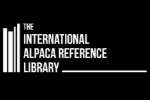Articles by Alpaca World Magazine:
Size Matters
Andy Spillane
It is just twelve months since the joint meeting of alpaca and llama clubs in France with the Department of Agriculture. It is good to be able to report that in general terms, cooperation between the clubs has continued to develop and inter ? club relations a lot more cordial than before. One result of this new mood of detente is a willingness to proceed with joint projects and co-operate over show programmes. A case in point is France?s major international show next year, one club arranging the alpaca judge from UK and the other the llama judge from the US. This show is being held in mid October, also a new departure for us. Perhaps the most exciting news about the show is its location. We have been granted permission to hold it at Chateau Pompadour.
Chateau Pompadour is the home of the French National Stud with the most superb stabling, arenas and other facilities. The magnificent chateau dominates the small town overlooking a beautiful valley containing the race course and trialling and event courses. Arnac-Pompadour is very centrally located, being midway between Limoges and Brive le Gaillarde just off the north/south A20 autoroute and close to its junction with the east/west A89 autoroute. The two day show is being held at the Haras Nationale in conjunction with a weekend for the Jacques Chirac trust for handicapped children. Hopes are high therefore, and we look forward to a large entry for both llama and alpaca classes at what will undoubtedly be one of Europe?s most prestigious shows.
Reading the BAS journal and various correspondence related to screening rules has left many of us here in France somewhat baffled. The on/off/maybe next year, proposal to raise screening fees to £2000 seems to be rather a strange policy. As I understand the process of screening it is supposed to determine, through thorough physical examination of conformation and fleece by suitably qualified personnel, the suitability of an animal for import into the UK herd. Naturally there is a cost associated with such a process and the importer must expect to pay a reasonable fee for this service. £2000 seems far from reasonable. Re-reading the correspondence I note that the fee proposed is supposed to be a preventative part of the screening process. Are BAS screening the animal or the buyer?s ability to pay, or is this an unsubtle attempt to virtually close the herd book and restrict trade in the EU? Screening by cheque book seems a rather dangerous precedent, I hope this poorly thought out policy will be quickly abandoned.
The ravages of Bleu Tongue continue in France and large numbers of sheep and cattle continue to be affected or killed. Fortunately so far no proven cases have occurred in camelids here. Nevertheless, we have vaccinated our herd for both types 1 and 8, both of which are prevalent in France. We are currently hoping for a prolonged spell of really cold weather, unfortunately it has continued mild and damp with midges and mosquitoes still present. At the moment the majority of owners seem to be adopting a ?wait and see? approach to vaccination lacking any clear veterinary direction, but if the weather remains mild I expect many will opt for vaccinations in the spring.
Recently one of our young males damaged his penis and caused it to inflame and inflate. Not something we or French vets had come across before. As usual, when in need of advice, I rang Nick Harrington Smith. Fortunately Nick had come across a similar case in Switzerland and prescribed appropriate creams and medicaments to be applied together with an ice pack! I have to say the ice pack was not a great success. The other treatments were more successful thankfully and easier to apply. Nick?s final piece of advice was to encase the penis in a sheath or condom. For this he prescribed the smallest available to be used.
This all happened just before lunch and, as regular visitors to France will know, France closes for lunch. I squeezed into our village shop just as they were closing, but no luck, they did not stock such items I was informed. I repaired to the Bar de la Poste and explained my plight to the owner, Roger. The idea of such a thing for an alpaca produced fits of laughter all round and several outlandish suggestions. Initially most thought I was having a joke at their expense. When they finally accepted that I was serious Roger, a shy bachelor in his mid sixties, searched under the counter and then through the till and found one, thus producing more laughter and ribald comment.
Well and good, but we would need more than one during the treatment period. Wiser now after my experience at the bar I persuaded my wife, setting out to shop in the local town, to stop at the chemists and ask for the smallest non lubricated available. At 6 foot 2 and 260 pounds I was not about to undertake such a mission. My wife duly visited the chemists and asked in her best French for the required items, the smallest possible and without lubrication. Confusion ensued and the assistant called the chemist himself to resolve the problem. Fortunately he is a charming man with a great sense of humour. When he finally understood what was required he announced to his assistant in a loud voice that ?Madame? would require a formal receipt for the farm accounts as these items were to be used by alpacas. Also, he instructed her to find the smallest possible as size mattered. I leave you to imagine the impact of this statement on a shop full of customers. My wife has now changed chemists.
Tweet


